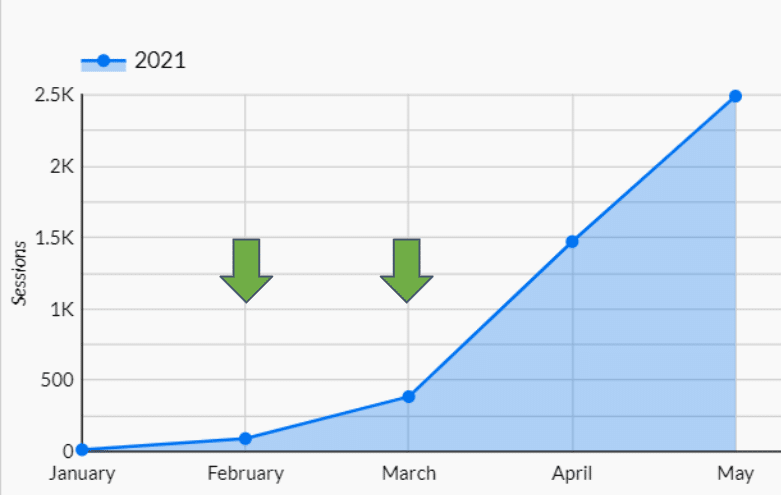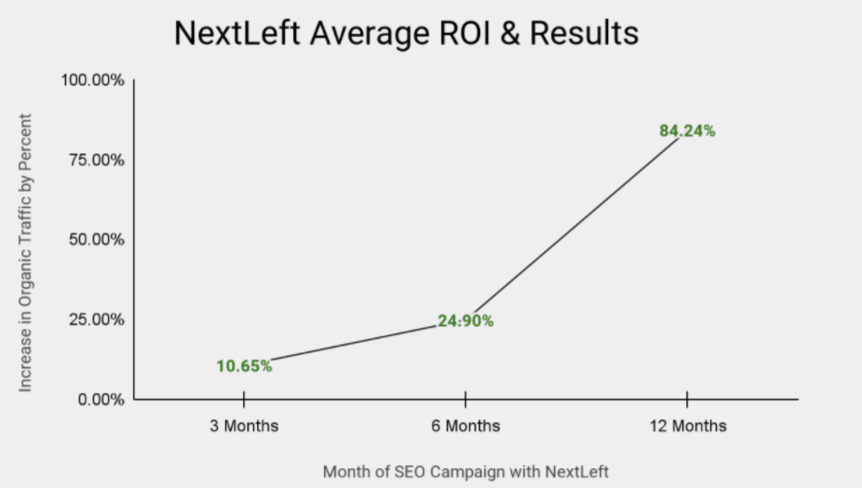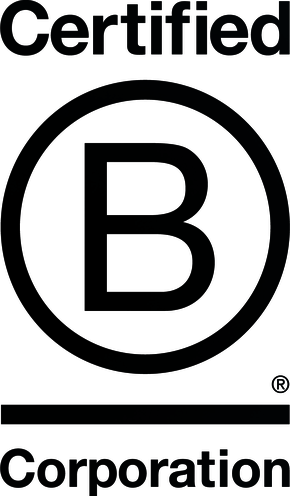Table of Contents
One of the most common questions we get at NextLeft about SEO is “How long does it take for SEO to work?”
SEO is not a quick-fix marketing tactic. When considering adding Search Engine Optimization to your marketing mix, your expectations need to be aligned with reality. You won’t see results in a matter of hours or even a matter of days. Instead, SEO is a diligent, on-going process that gradually improves your site’s rankings over time. So, how quickly does SEO take to work?
As is the case with many questions, there is not one concrete answer and the success of your SEO campaign depends on a number of factors which we will cover below. However, we can safely say that most SEO projects can take at least three months to begin showing a real impact.
What is SEO Success?
Before talking about the factors that influence SEO success, we first need to define what success means.
Since SEO focuses on organic results, the main factors for judging SEO success will be related to search visibility KPIs like:
- Increases in organic traffic
- Increases organic conversions (revenue, user registrations, form fills, etc)
- Improved keyword rankings
Also pay attention to how these KPIs are compared over time. For example, a year over year comparison will be more accurate than a month over month comparison for a business that experiences seasonal dips over the course of the year. Knowing how to make the right comparison is just as important as choosing the correct KPIs to track!
SEO Success Factors
SEO success doesn’t occur in a vacuum! There are many factors that play into a successful SEO campaign. These factors include:
- Implementation
- Website History
- The Competitive Landscape
- Domain Authority
- Resources
We will dive into each of these factors below.
Implementation
This may seem like a no brainer, but SEO doesn’t work if recommendations are either not implemented properly or not at all. You can find the best keywords and have a clear content marketing strategy, but if blog posts are never written or the metadata is implemented improperly, this can throw off the entire campaign. Accurate implementation is a foundational factor for SEO success!
Website History
Was there a recent site migration? Did a former SEO company build a ton of spammy backlinks? Are there numerous technical SEO issues that have been sitting for years untouched? Is a website brand new and has no authority or backlinks at all yet? Sometimes a website’s history can be the number one factor in determining the timeline for SEO success. A well maintained website that is already on good footing is going to see much faster results than a website that is in critical condition or just underwent major changes.
The Competitive Landscape
Competition is another large factor for SEO success. Think of it this way, there are only 10 organic spots on the first page and most people do not click back to the second page of search results. This means that your website needs to outrank a multitude of others in your space to have any visibility. Moreover, if your content or products intersect with multiple industries or niches, then the level of competition is multiplied even further.
Competition can be boiled down to a few factors:
- Quality of content: Good content will satisfy user intent, thoroughly explain the subject and be factually accurate. Low quality content will always have trouble ranking.
- Keyword Difficulty: Even if your content is top notch, your website will still need link authority to outrank competitors. The metric that most tools use is called Keyword Difficulty which measures the number and quality of backlinks to the top ten pages in the Search Engine Results Page (SERP) for that keyword. We will dive more into authority in the next section.
- E-A-T: This stands for Expertise, Authoritativeness and Trustworthiness and means that the written content is backed by someone who has credentials in the field. Especially for certain industries like medical or legal, competition that has more E-A-T will always perform better in SERPs.
Domain Authority
We’ve touched on domain authority in a few of the sections above, but this is such an important factor that it deserves its own section. Domain authority is a metric (ranked from 0-100) that measures the number of referring domains (website’s that link back to your site) and backlinks (the number of links from a given domain) that are pointing to a website. The more high quality, relevant backlinks a site has, the more likely it will rank for keywords it targets.
In terms of website history, a brand new website with no backlinks or authority is not going to rank for its keywords, no matter how rich the content is. The same is true for a website in an ultra competitive space. Even with well optimized content, if your competition has thousands more referring domains and backlinks, it will be an uphill battle until the level of domain authority is in the same ballpark.
* The table below shows just how difficult it is to have a high domain rating.
| Domain Rating | Websites on the Internet | Avg. Referring Domains |
| 0-5 | 146,455,043 | 1 |
| 6-10 | 10,322,431 | 30 |
| 11-15 | 5,171,577 | 44 |
| 16-20 | 3,085,066 | 57 |
| 21-25 | 2,499,437 | 85 |
| 26-30 | 2,493,952 | 137 |
| 31-35 | 1,377,630 | 547 |
| 36-40 | 861,493 | 314 |
| 41-45 | 494,599 | 263 |
| 46-50 | 313,324 | 352 |
| 51-55 | 268,988 | 444 |
| 56-60 | 152,985 | 708 |
| 61-65 | 93,021 | 956 |
| 66-70 | 64,713 | 1374 |
| 71-75 | 64,898 | 2789 |
| 76-80 | 21,209 | 6761 |
| 81-85 | 7,368 | 16,425 |
| 86-90 | 3,175 | 36,811 |
| 91-95 | 967 | 637,650 |
| 96-100 | 22 | 8,891,919 |
Resources
Resources for a successful SEO campaign can be broken into two categories: time and money.
Time is valuable in an SEO campaign for a number of reasons. It takes time for a search engine to:
- Crawl and index new pages
- Realize that technical fixes were implemented
- See that updates were made to page content or metadata
- Find backlinks and pass along the appropriate authority
* At NextLeft, we like to use the phrase “get the clock started” for fixes or changes that will take weeks or months for search engines to actualize.
Assuming that the quality of work being done is equal, money in this case relates directly to the amount of SEO tasks being completed. For example, a website can expect to see more organic traffic if it is getting four blog posts up per month rather than one. Same for link building – a website that is building ten links per month can expect to gain authority more quickly than a website that is building two per month. In addition to all of the factors mentioned previously, the amount of time and effort put into an SEO campaign will lead to the overall success.
* A perfect example of how resources impact the performance of a blog post. First, time for the page to get indexed and start ranking. Second, link building (green arrows) to push this post into traffic driving positions.

Case Study
At NextLeft, we’ve found that our clients, on average see an increase in organic traffic of:
- 11% after the first three months
- 25% after six months
- 84% after a year

Of course, these numbers are dependent on all of the factors for SEO success that were listed out previously. However, they do a great job of showing both how long it can take to start seeing signs of growth but then how exponential that growth can become over the long term.
SEO Takes Time – Find an Agency You Trust!
As exemplified by the numbers above, it’s recommended that you make a commitment to a long term, ongoing SEO strategy. SEO takes time, but will pay dividends in the long run.
For more information on crafting an SEO strategy that works, contact NextLeft today!


